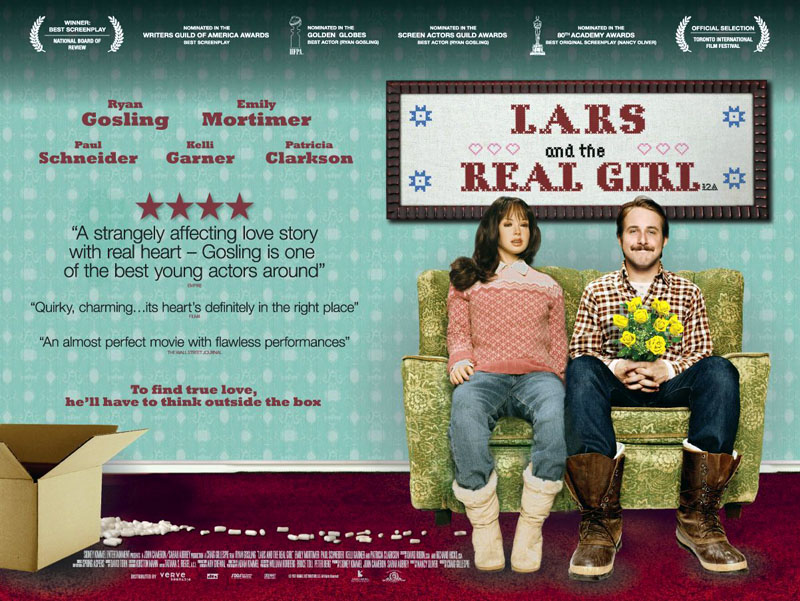Note (9-18-24): An expanded version of this post is included in Greg Dember’s book, Say Hello to Metamodernism!.
Lars and the Real Girl, a film released in 2007, is about a young man with an at first unspecified “specialness,” possibly a mental disability, who takes a mail-ordered blow-up doll as a girlfriend. Because Lars is gentle and well-liked, his family, coworkers and church members rally around him and sustain a reality in which “Bianca,“ the sex doll with whom he carries on a tender and chaste relationship, can credibly be seen as Lars’s paramour, whom he takes to parties, and who is eventually allowed to exist away from Lars, for example when he is cajoled into allowing her to take a part time job as a department store mannequin so that she’ll have something to do while Lars is at work all day. The premise is surreal, but it never subsumes or replaces the other more normative reality. That is, by a kind of double framing, the film manages to maintain the existence of a more typical consensus reality while simultaneously keeping the reality that is real to that character alive.
By way of distinguishing the metamodern approach to plot: If the same plot setup were treated in a modernist way, the reaction to the surreal element would be to try to eliminate it – Lars would be portrayed as a problem that needs fixing by means of laws, diagnoses, and medications. In a postmodern approach, the “falseness” of the sex doll would serve as a device for calling into question the perceived solidness of all of the relationships portrayed in the film, or even those that exist outside of the film. Instead, this film’s metamodern message, shown in the reaction of the other characters to Lars’s extreme “quirk,” is to show support for the necessity of other emotional truths; to welcome his version, thereby declaring that all readings/realities are of value. Indeed, the double frame works such that this operating principle ends up being the only one that could possibly resolve Lars’s backstory issue.
Crucially, in this film, as well as in other examples of a metamodern mentality, beyond merely tolerating the character as an oddity, the community members creatively, even playfully, welcome the fantasy element, and they do this without needing to abandon their own realities and norms to allow room for his.
*****
You may also enjoy this more recent post on metamodernism in Hollywood:



